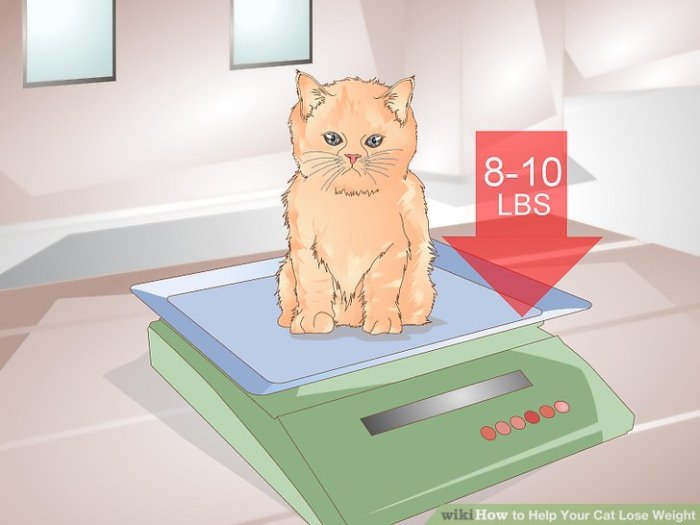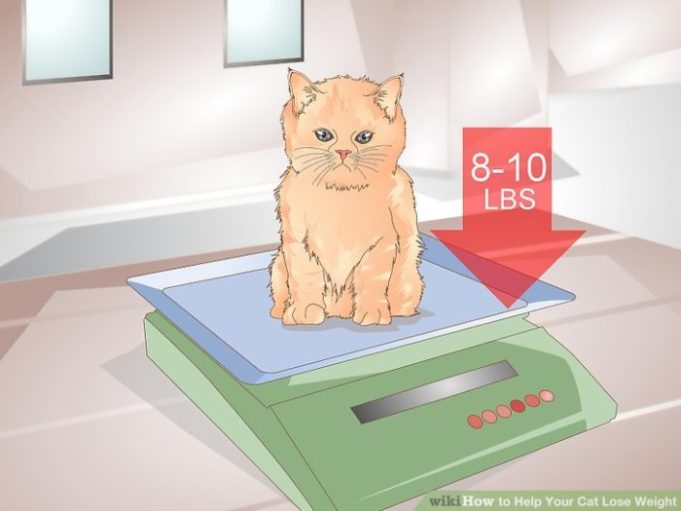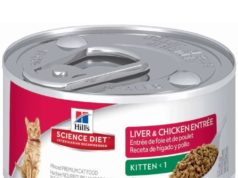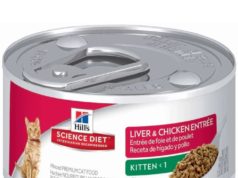How to put your cat on a diet is a question many cat owners face. While cats are known for their playful personalities and cuddly nature, excess weight can lead to serious health problems. From joint pain and diabetes to heart disease and respiratory issues, obesity can significantly impact your cat’s quality of life. This guide provides a comprehensive overview of the factors contributing to feline obesity, practical tips for assessing your cat’s weight, and effective strategies for helping your furry friend achieve a healthy weight.
Understanding the underlying causes of weight gain in cats is crucial. While genetics plays a role, dietary choices and lifestyle factors are often the primary culprits. Overfeeding, lack of exercise, and a sedentary lifestyle can all contribute to weight gain. By addressing these factors and implementing a tailored weight loss plan, you can help your cat live a longer, healthier life.
Understanding Cat Obesity
Obesity in cats is a serious health concern that can significantly impact their quality of life and lifespan. It is crucial to understand the factors contributing to feline obesity and the health risks associated with it.
Health Risks Associated with Feline Obesity
Obesity in cats can lead to a range of health problems, including:
- Diabetes mellitus: Obesity increases the risk of developing diabetes, a condition where the body cannot regulate blood sugar levels properly.
- Arthritis: Excess weight puts stress on joints, leading to inflammation and pain.
- Cardiovascular disease: Obesity can strain the heart and increase the risk of heart disease.
- Hepatic lipidosis (fatty liver disease): Obesity can lead to the accumulation of fat in the liver, causing liver dysfunction.
- Respiratory problems: Excess weight can put pressure on the lungs, making breathing difficult.
- Urinary tract issues: Obesity can contribute to urinary tract infections and blockages.
- Reduced lifespan: Obese cats generally have a shorter lifespan than their healthy counterparts.
Causes of Weight Gain in Cats
Several factors contribute to weight gain in cats:
- Overfeeding: Providing too much food is the most common cause of feline obesity.
- Inactivity: Lack of exercise can lead to weight gain.
- Medical conditions: Certain medical conditions, such as hypothyroidism, can cause weight gain.
- Genetics: Some breeds are predisposed to obesity.
- Diet: A diet high in calories and fat can contribute to weight gain.
- Age: Older cats tend to be less active and may have slower metabolisms, making them more prone to weight gain.
- Neutering/Spaying: Neutered/spayed cats have lower metabolic rates and may need fewer calories.
Factors Contributing to Obesity
Understanding the factors contributing to obesity is essential for preventing and managing weight gain in cats. These factors can be categorized into three main areas:
Genetics
Genetics plays a role in a cat’s predisposition to obesity. Certain breeds, such as the Maine Coon, Persian, and Ragdoll, are known to be more prone to weight gain. These breeds may have a slower metabolism or a tendency to overeat.
Putting your cat on a diet can be tricky, especially if they’re used to a free-flowing food bowl. But before you start restricting their kibble, consider the approach outlined in the how not to diet cookbook , which focuses on mindful eating and portion control.
The principles of this cookbook might surprise you, and could help you find a healthy and sustainable way to manage your cat’s weight.
Diet
Diet is a significant factor in feline obesity. Cats require a balanced diet that meets their nutritional needs. A diet high in calories and fat can lead to weight gain. It is essential to choose a diet formulated specifically for cats and avoid feeding them human food, which is often high in calories and fat.
Putting your cat on a diet can be tricky, especially if they’re used to indulging in tasty treats. One thing to keep in mind is that some human foods, like diet soda, aren’t as harmless as they seem. For example, you might be surprised to learn that is diet coke caffeine free ?
The answer is no, and caffeine can be harmful to cats. So, when considering a diet for your furry friend, make sure to consult with your vet to ensure they get the right balance of nutrition and avoid any potentially harmful ingredients.
A healthy diet for cats should be balanced in protein, fat, and carbohydrates.
Lifestyle
Lifestyle factors, such as activity levels and feeding habits, also contribute to obesity. Cats that are inactive or fed free-choice diets (where food is always available) are more likely to become overweight. Providing regular opportunities for exercise and feeding a controlled diet can help prevent obesity.
Putting your cat on a diet can be a challenge, but it’s important to make sure they’re getting the right amount of food to maintain a healthy weight. You’ll need to consult with your vet to determine the best diet for your cat, and be sure to make the transition gradually to avoid any digestive issues.
And while you’re focused on your cat’s health, don’t forget about your own! If you’ve been spending more time indoors with your feline friend, your shoes might be in need of a good cleaning. Check out this helpful guide on how to clean dirty shoes , and you’ll be back to enjoying your walks in no time.
Once you’ve got your shoes sparkling clean, you can focus on getting your cat back to their ideal weight, and both of you can enjoy a healthy and happy life together.
Assessing Your Cat’s Weight
Determining whether your cat is overweight or obese is crucial for their overall health. Excess weight can lead to various health issues, including diabetes, arthritis, and heart disease. Understanding your cat’s ideal weight and body condition can help you make informed decisions about their diet and exercise.
Visual Assessment
A visual assessment is a simple way to get a general idea of your cat’s body condition. Look for these signs:
- Ribs Easily Visible: You should be able to easily feel your cat’s ribs without having to press hard.
- Waistline: A healthy cat should have a visible waistline when viewed from above.
- Abdomen: The abdomen should be tucked up, not protruding.
- Body Shape: A healthy cat will have a rectangular body shape, not a round or apple-shaped one.
Body Condition Scoring
Body condition scoring systems are more precise methods for assessing your cat’s weight. Veterinarians use these systems to objectively evaluate your cat’s body fat percentage. These systems typically use a scale of 1 to 9, with 1 being severely underweight and 9 being severely overweight.
Here’s a comparison of different body condition scoring systems:
| System | Description | Score Range |
|---|---|---|
| Purina Body Condition Score | This system is commonly used by veterinarians and focuses on visual assessment. | 1-9 |
| AAHA Body Condition Score | This system is also used by veterinarians and considers both visual and tactile assessment. | 1-9 |
| Feline Body Condition Scoring Chart | This chart provides detailed descriptions for each score, making it easier to assess your cat’s body condition. | 1-9 |
Measuring Your Cat’s Weight, How to put your cat on a diet
The most accurate way to assess your cat’s weight is by using a pet scale. However, you can also estimate your cat’s weight at home using a regular bathroom scale:
- Step on the scale yourself and record your weight.
- Hold your cat securely and step on the scale again.
- Subtract your weight from the combined weight to get your cat’s weight.
It’s important to weigh your cat regularly, ideally once a week, to monitor any changes in their weight.
Setting Realistic Weight Loss Goals
Just like humans, cats need to lose weight gradually and safely. Rushing the process can be detrimental to their health and well-being. Setting realistic weight loss goals for your feline friend is crucial for a successful and sustainable weight management journey.
Calculating a Safe Weight Loss Rate
A safe and sustainable weight loss rate for your cat is typically between 1-2% of their body weight per week. This ensures that they lose weight gradually without experiencing nutritional deficiencies or health complications.
To calculate a safe weight loss rate, use the following formula:
(Current weight – Target weight) / (Number of weeks to reach target weight) = Weekly weight loss goal
For example, if your cat weighs 15 pounds and you want to help them lose 3 pounds over 6 weeks, their weekly weight loss goal would be: (15 – 12) / 6 = 0.5 pounds per week. This falls within the recommended range of 1-2% of their body weight.
Realistic Weight Loss Goals for Different Cat Breeds
Here are some examples of realistic weight loss goals for different cat breeds:
- Maine Coon: A Maine Coon weighing 20 pounds could aim to lose 1-2 pounds per week, targeting a final weight of 16-18 pounds.
- Siamese: A Siamese cat weighing 12 pounds could aim to lose 0.5-1 pound per week, aiming for a final weight of 10-11 pounds.
- Persian: A Persian cat weighing 10 pounds could aim to lose 0.25-0.5 pounds per week, aiming for a final weight of 8-9 pounds.
Dietary Changes for Weight Loss
Just like humans, cats need a balanced diet to maintain a healthy weight. A calorie-controlled diet is essential for weight loss, but it’s also important to ensure your cat gets all the necessary nutrients. Feeding your cat a diet specifically formulated for weight management will help them shed those extra pounds safely and effectively.
High-Quality, Low-Calorie Cat Food Options
Choosing the right food is crucial for your cat’s weight loss journey. Look for high-quality, low-calorie options that are formulated for weight management. These foods often contain a higher percentage of protein and fiber, which help cats feel fuller for longer and burn more calories.
- Prescription Weight Management Diets: These diets are formulated by veterinarians and are designed to provide the right balance of nutrients while restricting calories. They are typically available in both dry and wet forms. Prescription diets can be purchased from your veterinarian or through online retailers.
- Commercial Weight Management Diets: Many commercial cat food brands offer weight management formulas. These diets are generally less expensive than prescription diets but may not be as effective. Look for foods that are specifically formulated for weight loss and have a lower calorie count than regular cat food.
- Homemade Diets: While it’s possible to create a homemade diet for your cat, it’s important to consult with your veterinarian to ensure it meets their nutritional needs. Homemade diets can be challenging to balance and may not provide all the essential nutrients.
Types of Cat Food for Weight Loss
There are different types of cat food available, each with its own benefits and drawbacks for weight management.
- Dry Food: Dry food is typically lower in calories than wet food, making it a good choice for weight loss. It’s also more convenient to store and feed. However, dry food can be less palatable for some cats, and it may not provide enough moisture.
- Wet Food: Wet food is higher in moisture content, which can be beneficial for cats, especially those who are prone to dehydration. It’s also more palatable than dry food. However, wet food is typically higher in calories, so it’s important to choose a weight management formula.
- Raw Food: Raw food diets are becoming increasingly popular, but they can be challenging to prepare and may not be suitable for all cats. Raw food diets are typically lower in calories than dry or wet food, but they can be more expensive. It’s essential to ensure that raw food is properly handled and stored to prevent foodborne illness.
Feeding Strategies
Now that you have a better understanding of your cat’s weight, you’re ready to put together a feeding plan to help them reach their ideal weight. Here are some key strategies to keep in mind.
Portion Control
Portion control is a critical part of any weight loss plan. It involves carefully measuring out your cat’s food at each meal to ensure they are not overeating. To help with portion control, it is essential to follow the feeding guidelines on your cat’s food packaging. These guidelines typically provide a range of recommended daily food amounts based on your cat’s weight and activity level. You can also consult with your veterinarian to determine the appropriate portion size for your cat.
Meal Frequency
The frequency of your cat’s meals can also influence their weight. For cats on a weight loss diet, it is often recommended to feed them multiple smaller meals throughout the day rather than one large meal. This helps to keep their metabolism active and prevent them from feeling overly hungry. For adult cats, a schedule of 2-3 meals per day is often recommended, while kittens may need to eat more frequently.
Feeding Times
Consistent feeding times help establish a routine for your cat, which can be beneficial for weight management. By feeding your cat at the same time each day, you can help to regulate their hunger and prevent overeating.
Transitioning to a New Diet
It is crucial to transition your cat to a new diet gradually to prevent digestive upset. Abrupt changes in diet can lead to diarrhea, vomiting, and other digestive issues. To avoid these problems, gradually introduce the new food over a period of 7-10 days. Start by mixing a small amount of the new food with their current food, gradually increasing the proportion of the new food over time.
Sample Feeding Schedule
Here’s a sample feeding schedule for a cat on a weight loss diet:
| Time | Meal | Quantity |
|---|---|---|
| 7:00 AM | Breakfast | 1/4 cup of weight-loss formula |
| 1:00 PM | Lunch | 1/4 cup of weight-loss formula |
| 7:00 PM | Dinner | 1/4 cup of weight-loss formula |
*Remember, this is just a sample schedule. Your veterinarian can help you create a feeding schedule that is tailored to your cat’s specific needs. *
Exercise and Activity
Just like humans, cats need regular exercise to maintain a healthy weight and overall well-being. While some cats are naturally more active than others, it’s essential to encourage physical activity in all cats, especially those on a weight-loss program.
Interactive Play
Interactive play is a fun and engaging way to get your cat moving. It stimulates their natural hunting instincts and provides mental enrichment. Here are some tips for incorporating interactive play into your cat’s routine:
- Use toys that encourage chasing, pouncing, and batting, such as feather wands, laser pointers, and fishing pole toys.
- Vary the types of toys you use to keep your cat interested.
- Schedule regular play sessions, aiming for at least 15-20 minutes twice a day.
- Keep play sessions short and intense to mimic a real hunting experience.
Puzzle Feeders
Puzzle feeders are a great way to combine exercise with feeding time. They challenge your cat’s problem-solving skills while encouraging them to work for their food.
- Puzzle feeders come in various designs, from simple treat dispensers to complex mazes.
- Start with a simple puzzle and gradually increase the difficulty as your cat becomes more proficient.
- Puzzle feeders can help slow down your cat’s eating, which can be beneficial for weight management.
Vertical Scratching Posts
Vertical scratching posts encourage your cat to stretch and climb, which can help them burn calories and improve their flexibility.
- Choose a scratching post that is tall enough for your cat to fully stretch out.
- Place the scratching post in a high-traffic area to encourage use.
- Consider adding a cat tree or condo to provide additional climbing opportunities.
Indoor and Outdoor Activities
Even indoor cats can benefit from regular exercise. Here are some ideas for indoor and outdoor activities:
- Indoor Activities:
- Create a “catio” (a screened-in porch or balcony) to provide a safe outdoor space for your cat.
- Set up obstacle courses using furniture, boxes, and tunnels.
- Play hide-and-seek with your cat using toys or treats.
- Outdoor Activities:
- If your cat is allowed outdoors, supervise them closely and ensure their safety.
- Consider using a harness and leash to take your cat for walks.
- Provide a safe and stimulating outdoor environment with climbing trees, bushes, and other natural features.
Monitoring Progress and Adjustments
It’s crucial to monitor your cat’s weight loss progress and make adjustments to their diet and exercise plan as needed. Regular monitoring and adjustments ensure they stay on track and achieve their weight loss goals safely and effectively.
Monitoring Your Cat’s Weight Loss
Regularly monitoring your cat’s weight loss is essential to ensure they’re making progress. Weighing your cat at least once a week will help you track their weight loss journey. It’s important to use the same scale and weigh your cat at the same time each week to ensure consistent results. You can also keep a record of their weight loss progress in a journal or spreadsheet. This will allow you to track their progress over time and identify any plateaus or setbacks.
Importance of Regular Veterinary Check-Ups
Regular veterinary check-ups are essential during your cat’s weight loss journey. Your veterinarian can monitor your cat’s overall health and ensure they’re not experiencing any complications related to weight loss. They can also provide guidance on adjustments to your cat’s diet and exercise plan based on their progress.
It’s recommended to schedule veterinary check-ups every 1-3 months during the weight loss journey.
Adjusting Your Cat’s Diet and Exercise Plan
Based on your cat’s weight loss progress, you may need to adjust their diet and exercise plan.
Adjusting Diet
- Maintain the same diet: If your cat is losing weight steadily and maintaining a healthy weight, you can continue with the current diet plan.
- Reduce calorie intake: If your cat is not losing weight fast enough, you may need to reduce their calorie intake. You can do this by reducing the amount of food you give them or switching to a lower-calorie diet.
- Increase calorie intake: If your cat is losing weight too quickly, you may need to increase their calorie intake. You can do this by increasing the amount of food you give them or switching to a higher-calorie diet.
Adjusting Exercise
- Increase exercise: If your cat is not losing weight fast enough, you can increase their exercise by adding more playtime or interactive toys.
- Decrease exercise: If your cat is losing weight too quickly, you may need to decrease their exercise. You can do this by reducing playtime or choosing less physically demanding activities.
Maintaining a Healthy Weight
Just like humans, cats need to maintain a healthy weight after they’ve lost some pounds. Keeping them at a stable weight is crucial for their overall health and well-being. It’s not just about getting them to a healthy weight, but about keeping them there.
Preventing Weight Regain
Once your cat has achieved their ideal weight, preventing weight regain becomes a top priority. Here are some effective strategies:
- Continue the Diet: Don’t suddenly switch back to their old food or feeding habits. Continue with the weight-loss diet plan that worked for them.
- Monitor Food Intake: Carefully measure out their food portions and stick to the recommended amounts. Avoid overfeeding, even if they seem hungry.
- Regular Exercise: Don’t let them become sedentary. Keep them active with play sessions, interactive toys, and opportunities to climb and explore.
- Treats in Moderation: Avoid giving too many treats. If you do give them treats, choose healthy, low-calorie options and incorporate them into their daily food allowance.
- Vet Checkups: Regular veterinary checkups are essential for monitoring their weight and overall health. Your vet can help you make any necessary adjustments to their diet or exercise plan.
Benefits of a Healthy Lifestyle
Maintaining a healthy weight and lifestyle has numerous long-term benefits for your cat:
- Increased Lifespan: Obese cats have a shorter lifespan than cats at a healthy weight. Maintaining a healthy weight can help them live longer and healthier lives.
- Reduced Risk of Health Issues: Obesity increases the risk of several health problems, including diabetes, joint problems, heart disease, and certain types of cancer. A healthy weight helps to minimize these risks.
- Improved Mobility and Energy: Healthy cats are more agile and have more energy to play and explore. Maintaining a healthy weight helps them stay active and enjoy life to the fullest.
- Enhanced Quality of Life: A healthy weight improves their overall well-being and quality of life. They’ll be more comfortable, active, and playful.
Wrap-Up: How To Put Your Cat On A Diet

Putting your cat on a diet requires patience, consistency, and a commitment to providing a healthy lifestyle. By following the steps Artikeld in this guide, you can help your cat achieve a healthy weight and enjoy a fulfilling life. Remember, every cat is unique, and their needs may vary. Regular veterinary check-ups are essential to monitor your cat’s progress and make any necessary adjustments to their diet and exercise plan. With a little effort and dedication, you can help your feline companion achieve a healthy weight and live a long and happy life.
Detailed FAQs
What if my cat is picky and refuses to eat the new food?
Start by gradually mixing small amounts of the new food with their old food. Increase the ratio of the new food over time until they are eating it exclusively. You can also try warming the food or adding a small amount of wet food to make it more appealing. Consult your veterinarian if you’re having difficulty transitioning your cat to a new diet.
How much exercise does my cat need to lose weight?
The amount of exercise your cat needs will depend on their age, breed, and activity level. Aim for at least 15-20 minutes of active play per day. Interactive toys, puzzle feeders, and vertical scratching posts can help keep your cat engaged and active.
What if my cat is overweight due to a medical condition?
It’s important to rule out any underlying medical conditions that may be contributing to your cat’s weight gain. Schedule a veterinary checkup to discuss your cat’s health and receive personalized advice.
























